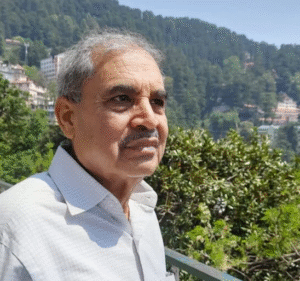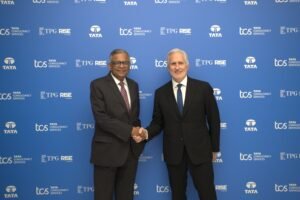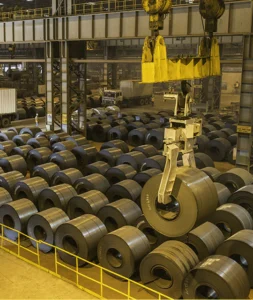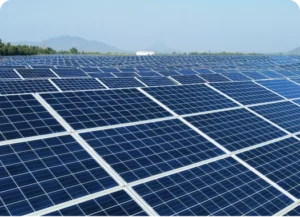Power, Pride and Partnership
When nations rise, they are tested — not only in economic or military terms, but in the assertion of sovereignty, dignity and self-worth. India’s most high-profile bilateral engagement in recent decades, its relationship with the United States, must be shaped by strategic clarity and self-respect — not by compulsive alignment or muted compliance.
In diplomacy, as in life, self-esteem is non-negotiable. The recent sharp rebuttal by India’s Ministry of External Affairs (MEA) to Western criticism of India’s trade with Russia is more than a defence of energy imports; it is a declaration of strategic dignity. As the US and Europe continue their selective moralising over India’s relations with Moscow, New Delhi’s response underscores a fundamental truth: true partnerships cannot demand unilateral compromises.
From Cold Distance to Strategic Warmth
India–US relations have travelled a long road — and not always a smooth one. In the early decades after independence, India’s non-alignment policy and close economic cooperation with the Soviet Union kept Washington at arm’s length.
In 1971, during the Bangladesh Liberation War, the US sent the Seventh Fleet into the Bay of Bengal in a show of support for Pakistan — an episode that deepened Indian mistrust. India stood alone — and prevailed.
In 1998, the pattern resurfaced. India conducted its second series of nuclear tests (Pokhran-II), declaring itself a nuclear weapons state. The move invited US sanctions, reinforcing the image of a relationship defined more by friction than friendship.
India endured the pain — and within years, the same US came knocking for partnership. In the early 2000s, with the India–US Civil Nuclear Agreement, the ice began to thaw. Since then, the partnership has expanded across defence, technology, clean energy and counter-terrorism.
Yet history has left a lesson: warmth does not erase the need for watchfulness. Weakness invites pressure. Strength commands respect. Consistency sustains both.
Fast forward to today. Washington occasionally reaches for pressure levers — the most recent being the threat of imposing higher tariffs on Indian goods, a reminder that even in close partnerships, economic coercion can lurk.
Statement by Official Spokesperson⬇️
🔗 https://t.co/BNwLm9YmJc pic.twitter.com/DsvRvhd61D— Randhir Jaiswal (@MEAIndia) August 6, 2025
A Question of Principle, Not Preference
When the Russia–Ukraine conflict broke out, energy markets were thrown into turmoil. Traditional Western suppliers turned inward, prioritising Europe. It was in this context that India diversified its oil sources, including from Russia — a move the US initially encouraged helping stabilise global prices.
Now, with Western criticism mounting, the MEA has called out the hypocrisy:
- Europe’s trade with Russia remains vast — €67.5 billion in goods in 2024, plus €17.2 billion in services in 2023. European LNG imports from Russia even hit a record 16.5 million tonnes in 2024.
- The US continues importing Russian uranium hexafluoride, palladium, fertilisers and chemicals.
Against this backdrop, targeting India, the MEA said, is “unjustified and unreasonable.” India’s imports are driven by the need to ensure affordable energy for 1.4 billion citizens — a “vital national compulsion.”
BREAKING ⚠️
Trump orders additional 25% tariff on Indian exports to U.S., taking it to a total of 50% pic.twitter.com/UGigfnFkQM
— Shiv Aroor (@ShivAroor) August 6, 2025
Friendship Yes, Subservience No
India–US relations are valuable and multifaceted, from defence and digital technology to clean energy and diaspora diplomacy. But partnerships must rest on mutual respect, not unequal expectations.
In recent years, the asymmetry has occasionally shown — public remarks by US lawmakers, visa-related provocations, sanctions rhetoric. There is a quiet but growing unease in India’s strategic circles — and among ordinary citizens — that Washington sometimes oversteps.
Until now, India’s responses were measured — sometimes too measured. The recent pushback marks a course correction. It sends a subtle but clear message: India will not be lectured, especially not by those who practice what they preach against.
The Cost of Subservience
History warns against over-dependence on any single partner. During the Cold War, India’s reliance on the Soviet Union left it diplomatically exposed after the USSR’s collapse. Today, an unquestioning alignment with the US carries similar risks — whether through CAATSA sanctions threats, pressure on Ukraine policy, or future demands regarding China.
The US has repeatedly shown that its partnerships are transactional, not unconditional. From abandoning the Kurds in Syria to fluctuating climate finance commitments, Washington’s foreign policy is driven by self-interest — as it should be. India must act no differently.
The Role of Self-Esteem in Foreign Policy
Some argue that foreign policy must be dispassionate, guided only by cold logic and national interest. True, but national interest is not value-neutral. It includes the image of the nation, the confidence of its people, and the tone with which the world engages it.
Self-esteem in diplomacy does not mean belligerence. It means:
- Speaking truth to power, even when inconvenient.
- Exposing hypocrisy, with facts not fury.
- Setting red lines, and sticking to them.
The MEA’s statement does all of this — and in doing so, sets a precedent for future engagements.
A Framework for Equal Partnerships
The MEA’s response offers a blueprint for how India should navigate great-power relations:
- Mutual Benefit, Not Moral Policing – Trade and security cooperation must be based on shared interests, not one-sided demands.
- Transparency Over Pressure – When criticised, India must call out double standards with facts, as the MEA did with EU–US trade data.
- Diversify to Reduce Leverage – Stronger ties with Europe, Japan, and the Global South ensure India is not beholden to any single power.
India’s refusal to cut Russian oil imports despite G7 pressure saved billions in energy costs and stabilised its economy — a clear case of self-interest prevailing over external pressure.
Strategic Autonomy Is Not Isolation
India is not retreating from the world. It seeks engagement — on equal terms. It wants partnerships, not patronage. It believes in multilateralism, but not in moral lectures from those with strategic interests of their own.
The coming years will test this balance further — with China’s assertiveness, an unpredictable US political landscape, and a fluid global economy. India must navigate these currents with realism — and dignity intact.
A Partnership, Not a Pulpit
India must continue its relations with the United States — but never at the cost of self-esteem. The strength of a partnership lies in its ability to accommodate disagreement, not demand obedience.
By standing up for its energy choices, India is defending its sovereign right to choose its own path. The MEA’s voice this week was more than a rebuttal — it was a reminder drawn from history: respect is earned, but it must also be defended.
The Message to Washington — And to Ourselves
- To the US: India is not a supplicant. This is not 1962. We’ve earned our seat at the table — not through compliance, but through confident assertion of our interests.
- To India: Never forget the lessons of history. Never apologise for acting in self-interest. Never trade strategic autonomy for temporary favour.
This is the era of Indian strategic swagger.
The world will adjust.
About The Author

Mr. Hridaya Mohan (hridayamohan@yahoo.co.in) is a regular Columnist with a renowned Indian daily “The Hitavada”, “Bharat Neeti Media” and some other newspapers / magazines internationally. He lived and worked in Beijing for 6 long years as Chief Representative (China & Mongolia), SAIL. Recipient of “Sir M Visvesvaraya Gold Medal”for one of his papers, “Benchmarking of Maintenance Practices in Steel Industry” from The Institution of Engineers (India), he was awarded with “Scroll of Honour” for the excellent contributions to Engineering fraternity from IE(I), Bhilai, “Jawahar Award” for leadership excellence in SAIL and “Supply Chain Leader – 2017” award from IIMM. The writer lived and worked in Beijing for 6 long years as Chief Representative (China & Mongolia), SAIL.









